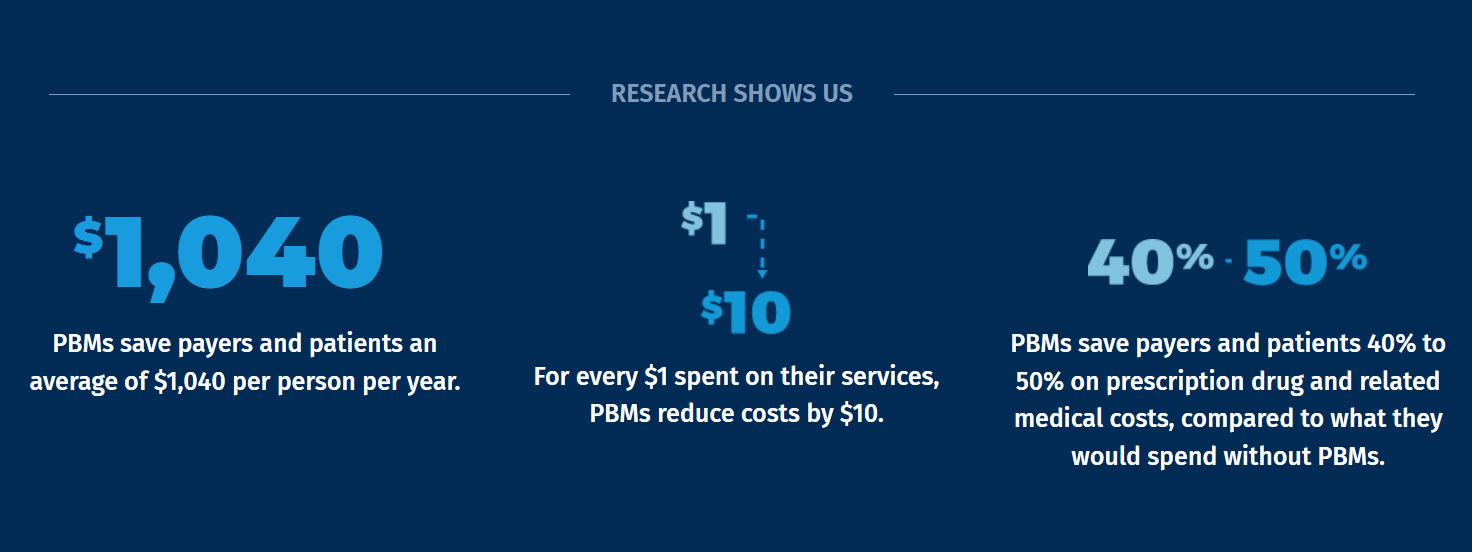Introduction
Pharmacy benefits are more than just a perk; they are a lifeline. Did you know that nearly 60% of adults in the U.S. take prescription medications to manage chronic conditions? ¹ This staggering statistic underscores the essential role of pharmacy benefits in our healthcare system.
In 2022, approximately 54.5% of the U.S. population had health insurance through their employer. ² Given the then U.S. population of about 331 million, this means roughly 180 million people received employer-sponsored health insurance, which typically includes pharmacy benefits.
Understanding the true value of these benefits is crucial, as they not only help individuals maintain their health but also contribute to a healthier, more productive society.
Understanding Pharmacy Benefits
Pharmacy benefits are an integral part of health insurance plans that cover the cost of many medications. These benefits are designed to make medications more affordable for patients, ensuring they have access to the necessary treatments without facing prohibitive costs.
Pharmacy benefits can be managed by Pharmacy Benefit Managers (PBMs), who negotiate with drug manufacturers and pharmacies to determine which drugs are covered and at what cost.

Components
Pharmacy benefits typically include several key components:
- Prescription Drug Coverage: This is the core component of pharmacy benefits, covering a range of medications that are essential for treating various health conditions. The extent of coverage can vary depending on the insurance plan and the formulary (which is a list of medications that are covered by the plan).
- Copayments: Patients are often required to pay a copayment for their prescriptions, which is a fixed amount determined by their insurance plan. Copayments can vary based on the tier of the medication, with generic drugs generally having lower copayments than brand-name drugs.
- Formulary Management: PBMs manage formularies to control costs and ensure patients have access to effective medications. Formularies categorize drugs into different tiers, with preferred drugs usually being more affordable due to negotiated discounts with manufacturers.
Understanding the components of pharmacy benefits and the impact of drug price increases is crucial for ensuring that patients receive the medications they need without undue financial burden.
By effectively managing these benefits, plan sponsors can help maintain the balance between cost control and access to essential medications.
The Role of Pharmacy Benefits in Health

Access to Medications
Pharmacy benefits play a critical role in providing access to necessary medications for millions of Americans. PBMs administer prescription drug plans for more than 275 million individuals who have health insurance from various sponsors. ³
By negotiating with drug manufacturers and pharmacies, PBMs ensure that patients can afford the medications they need to manage their health. Over the next 10 years, PBMs are projected to save health plan sponsors and consumers more than $1 trillion on prescriptions, significantly reducing the financial burden on patients and the healthcare system.
Chronic Disease Management
Effective pharmacy benefits are essential in managing chronic diseases such as diabetes, heart disease, hypertension, amongst many others. PBMs improve drug therapy and patient adherence, which is crucial for managing these conditions.
For instance, by optimizing diabetes care, PBMs help prevent ⁴:
- 440,000 heart attacks
- 60,000 incidents of kidney disease
- 330,000 strokes
- 150,000 amputations
These benefits not only enhance the quality of life for patients but also reduce healthcare costs associated with emergency care and hospitalizations. Through specialty pharmacy services, PBMs also help extend and improve the quality of life for patients with chronic conditions like multiple sclerosis and rheumatoid arthritis.
Preventive Care
Pharmacy benefits also play a pivotal role in preventive care and early intervention. By providing coverage for vaccines, screenings, and other preventive medications, PBMs help identify and treat health issues before they become severe. This proactive approach helps reduce the incidence of serious health complications and lowers overall healthcare costs.
Furthermore, PBMs will help prevent 1 billion medication errors ⁵, ensuring that patients receive the correct medications and dosages, which is crucial for effective preventive care.
Understanding the significant impact of pharmacy benefits on health access, chronic disease management, and preventive care underscores their importance in the healthcare system.
PBMs not only facilitate access to necessary medications but also contribute to improved health outcomes and reduced healthcare costs, demonstrating their indispensable role in promoting health and well-being.
Economic Impact

Cost Savings for Companies and Members
Pharmacy benefits significantly reduce out-of-pocket costs for members. According to the National Bureau of Economic Research, PBMs deliver nearly $150 billion in annual savings ⁶ through negotiated discounts and efficient drug utilization. Without PBMs, members would face much higher costs, losing almost $60 billion in savings each year. ⁷
Cost Savings for Employers
Employers also benefit financially from comprehensive pharmacy benefits. The Department of Labor found that lacking a PBM in their Workers’ Compensation Program led to over $320 million in excess prescription drug costs. ⁸
States that restricted PBM services saw drug costs rise, with West Virginia experiencing a 12.5% increase in prescription costs after removing PBMs from its Medicaid program. ⁹
Overall Healthcare Costs
Pharmacy benefits help lower overall healthcare costs by preventing expensive treatments and hospitalizations. Effective management of medications and chronic diseases reduces the need for emergency care and hospital stays. PBMs also help prevent 1 billion medication errors, further cutting healthcare costs.
The evidence is clear: PBMs lower drug costs and improve healthcare. They save companies and employees billions annually and are crucial for keeping healthcare affordable and accessible.
Enhancing Well-being
Improved Health Outcomes
Pharmacy benefits are directly linked to better health outcomes for individuals. By providing access to necessary medications, PBMs ensure that patients can manage chronic conditions effectively, adhere to treatment plans, and prevent complications. This proactive approach leads to healthier populations and reduces the incidence of severe health issues.
Quality of Life
Access to medications through comprehensive pharmacy benefits significantly improves the quality of life for patients. When individuals can afford their medications, they are more likely to follow their treatment regimens, experience fewer symptoms, and maintain better overall health. This enhanced well-being allows patients to lead more active and fulfilling lives.
Employee Productivity
Employees with good pharmacy benefits tend to be more productive and have fewer sick days. When employees have access to the medications they need, they can manage their health conditions more effectively, reducing absenteeism and improving their ability to perform at work. This leads to a healthier, more engaged, and productive workforce, benefiting both the employees and their employers.

Challenges and Solutions
Challenges
Providing and accessing pharmacy benefits comes with several challenges:
- High Costs: The rising cost of prescription medications can make it difficult for patients and employers to afford necessary treatments.
- Complex Formularies: Navigating the various tiers and restrictions within formularies can be confusing for employees, leading to difficulties in obtaining the correct medications.
- Utilization Management: Prior authorizations and other management tools can delay access to necessary medications, causing frustration for patients and healthcare providers.
Solutions and Innovations
To address these challenges, several solutions and innovations are emerging in the pharmacy benefits landscape:
- Value-Based Care: This approach focuses on patient outcomes rather than the volume of medications dispensed, ensuring that patients receive the most effective treatments.
- Transparent Pricing: Increasing transparency in drug pricing helps patients and employers understand the true cost of medications, making it easier to manage expenses and negotiate better rates.
- Innovative Programs: Programs that reduce or eliminate copays and simplify access to medications are becoming more popular, providing significant relief to patients and employers alike.
Intercept Rx
For self and level-funded companies, Intercept Rx offers a groundbreaking solution. With an Rx Optimization Program that features $0 copay, Intercept Rx ensures that patients can access the medications they need without the financial burden.
This innovative approach not only makes treatments more affordable but also simplifies the process of obtaining necessary medications, enhancing overall health and well-being.
Conclusion
We encourage you to advocate for better pharmacy benefits and to evaluate your current benefits to ensure they meet your needs. Consider how programs like those offered by Intercept Rx, with $0 copay options, can enhance access to essential medications and improve employees’ overall health.
Pharmacy benefits are more than just a part of healthcare—they are a cornerstone of a healthy, productive society. By ensuring access to necessary medications and promoting better health outcomes, we can create a future where everyone has the opportunity to thrive. As the saying goes, “Health is wealth,” and with robust pharmacy benefits, we can all be richer in well-being.
Sources:
https://www.nber.org/papers/w30231
https://www.americanprogress.org/article/5-things-to-know-about-pharmacy-benefit-managers/
Footnote Markers:
¹ https://hpi.georgetown.edu/rxdrugs/
https://www.cdc.gov/nchs/products/databriefs/db470.htm
³ https://www.pcmanet.org/value-of-pbms/
⁴ https://www.pcmanet.org/value-of-pbms/
⁵ https://www.pcmanet.org/value-of-pbms/
⁶ https://www.nber.org/papers/w30231
⁷ https://www.nber.org/papers/w30231
⁸ https://www.oig.dol.gov/public/reports/oa/2023/03-23-001-04-431.pdf

